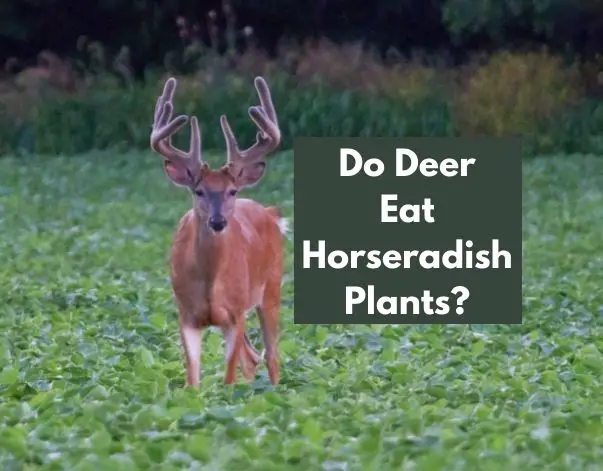There are a lot of myths out there about what deer do and do not eat. One common question is: do deer eat horseradish plants?
Yes, deer will eat horseradish plants. While horseradish plants are classified as deer-resistant, they will absolutely eat them if they’re hungry enough. Deer will eat the leaves and stems from horseradish plants right down to the ground.
There’s a bit more to learn about deer eating horseradish plants which we’ll cover in today’s guide. Read on for more info.
Why Do Deer Eat Horseradish Plants?
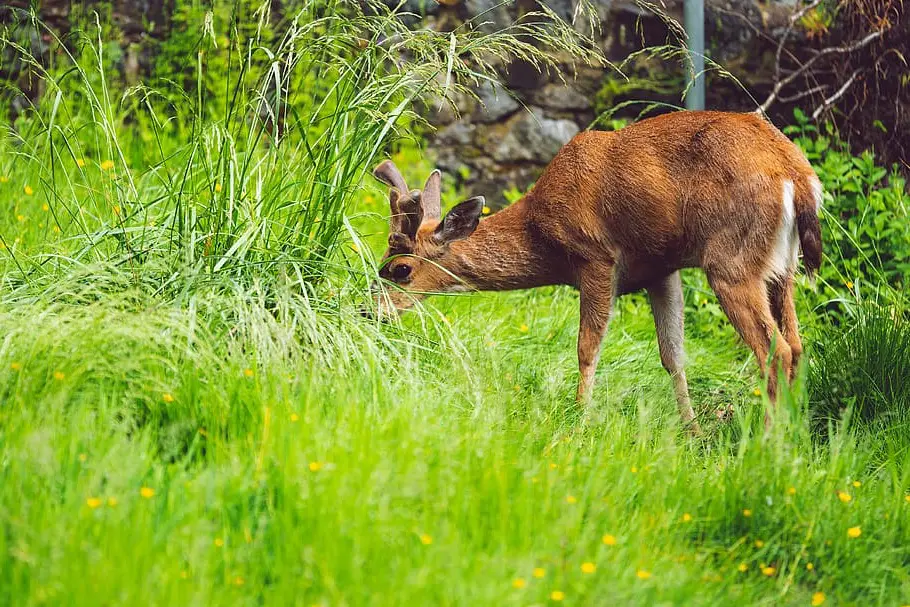
As we covered, deer will eat horseradish plants when they’ve got the chance.
But why do they do this?
Well, for one, deer are browsing animals, meaning they’ll eat almost anything they come across if they’re hungry enough.
Your horseradish plants are most susceptible to deer when there are fewer other food choices around for them, and especially when the horseradishes are young and the plants are tender.
Additionally, deer will consume a wide variety of foods like horseradish plants based on opportunity.
If you’re not convinced, leave some horseradishes out for deer to eat (or plant some), and wait to see what happens!
How Do I Keep Deer From Eating My Horseradish Plants?
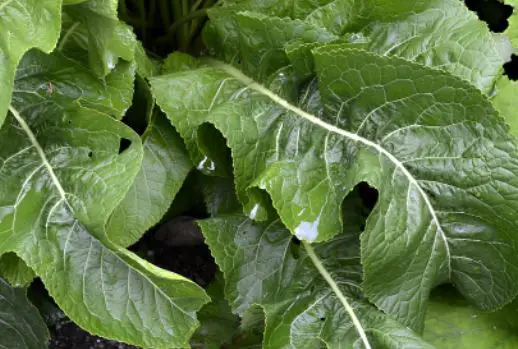
There are a few things to keep in mind when you’re protecting horseradish plants from hungry deer: their habits, your scent, repellent options, and when you plant them.
Deer will eat nearly anything if they’re hungry enough, so your main goal is making your garden as least inviting to deer as possible.
Check out our guide on how to keep deer from eating plants where we cover 25 quick and easy tips for keeping hungry deer out of your garden.
Will My Horseradish Plants Grow Back After Deer Eat Them?
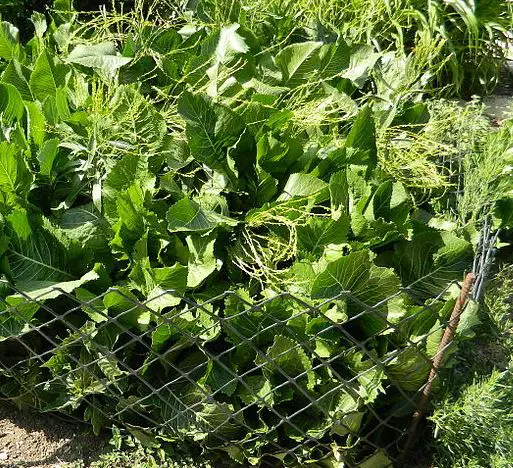
So a hungry deer snuck in your garden and had a feast on your horseradish plants. Will they grow back?
Usually as long as the plants are healthy, they will continue to grow and produce new horseradishes from side-shoots.
Continue to care for your horseradish plants including water and fertilizing until they’re back to good health.
If your horseradish plants don’t bounce back after a few weeks, you’ll need to remove them and start new plants.
Are Horseradish Plants Good For Deer To Eat?
Feeding deer horseradish plants provides them with the following vitamins and minerals:
- Vitamin C
- Zinc
- Calcium
- Magnesium
- Potassium
These vitamins and minerals provide deer with many benefits.
For example, vitamin C will help protect deer against scurvy and vitamin assists in deer immune system function.
Deer need calcium for bone, teeth, and antler growth and health as well as other bodily functions like milk production and metabolism.
Potassium is great for deer because it helps maintain good pH balance and aid in proper digestion.
Magnesium is great for antler growth, increasing body weight, and has immune system benefits for deer.
A 2007 study showed that zinc can assist in growing larger antler sizes in white-tailed deer.
Fat-Soluble Vitamins For Deer
Vitamins A, D, E, K, and calcium are fat-soluble, so they can be stored in the deer’s fat and liver to be used later as needed.
This means that vitamin A content from deer eating horseradish plants can be “stored up” for later use, which is highly beneficial.
Water-Soluble Vitamins For Deer
Vitamin C, B Vitamins, niacin, folic acid, and potassium are all water-soluble, which means they cannot be stored, so they must be replaced continually.
So a deer that eats horseradish plants for the vitamin C content must continue to consume foods that contain these necessary vitamins to stay healthy.
How To Feed Deer Horseradishes
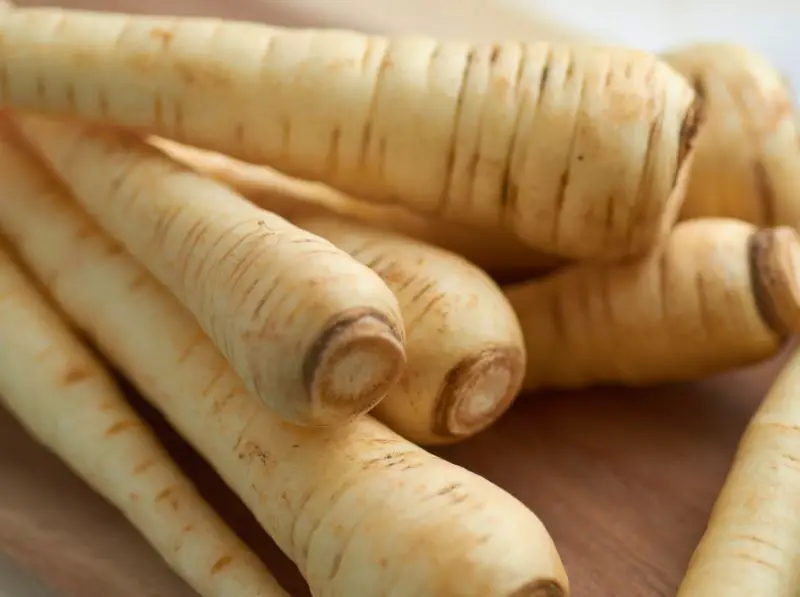
Most gardeners and veggie growers want to keep deer away from their horseradish plants.
If you have extra horseradishes or are looking to see if you can feed horseradish plants to deer, this next part is for you!
There are a few things to keep in mind when feeding deer horseradish plants: the size of the portion, your scent, and how many deer you’re feeding.
Make sure to place the horseradishes on the ground where they’re visible and can be easily reached by deer.
If you’ve got a winter food plot with horseradish plants growing in it, the deer will eat them right out of the ground.
If deer are not normally around your area in winter, don’t feed them leading up to winter as they will not migrate where and when they should.
This will lead to the deer relying on you as their food source and can result in starvation.
Should I Cut Up Horseradish Plants For Deer To Eat?
You don’t need to worry about cutting horseradishes for deer to eat.
Deer’s teeth and jaws are designed to handle much harder foods than horseradish, so you’re fine feeding it to them as-is.
Don’t Leave Your Scent On Deer Food
Deer have a keen sense of smell that allows them to smell human scent farther than bloodhounds can, and can smell up to six different scents at once.
Deer won’t eat food like horseradish plants if they have a strong human scent on them, so you should take care to minimize your trace.
You can do this by rinsing the horseradishes and also washing your hands with antimicrobial soap.
Alternatively, you can put a few drops of apple cider vinegar on your hands when handling food you’ll be giving to the deer.
Another easy option is to use gloves when handling horseradish plants for deer to eat.
Consider The Amount Of Deer You’re Feeding
If you have lots of deer in your area, think twice about putting out food continuously for them.
If you bring deer together at the same feeding site, it can increase their risk of contracting chronic wasting disease or other communicable diseases from each other.
Do Deer Eat Horseradish Plants? Wrapping Things Up
So, do deer eat horseradish plants?
The answer is yes!
Although horseradishes aren’t a deer’s first choice, they’ll definitely eat them if they’re hungry enough.
Fortunately there are many methods you can use and combine to keep deer away from your precious horseradish plants.
Try a few and see what works best for you.
Have any observations to add to the discussion? Be sure to let us know in the comments below.
Check our our other helpful wildlife guides while you’re here:
- Do deer eat pumpkins?
- Do deer eat mums?
- Do deer eat roses?
- Do deer eat tomatoes?
- Do deer eat sunflowers?
- Do deer eat tulips?
- Do deer eat rhododendron?
- Do deer eat hibiscus?
- Do deer eat squash?
- Do deer eat jalapeno plants?
- Do deer eat blackberries?
- Do deer eat sweet potatoes?
- Do deer eat carrots?
- Do deer eat strawberries?
- Do deer eat kiwi?
- Do deer eat green beans?

